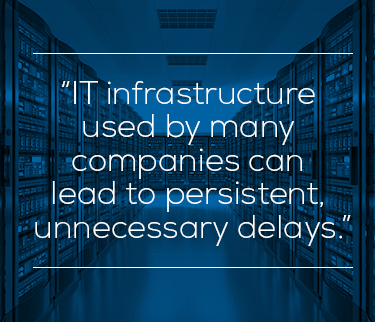 Looking back at the past two decades, most of us would agree that the rate of technological change has been incredibly high.
Looking back at the past two decades, most of us would agree that the rate of technological change has been incredibly high.
From the typical consumer’s perspective, progress is made practically on a daily basis, whether we are talking about the iPhone and personal tablets, virtual reality, or smart domestic technology and the Internet of Things.
In the asset-management industry, however, progress has not kept up with the pace. According to recent comments made by Saurabh Kumar of Singapore’s Stradegi Investment Management Consulting, technology has signally failed to keep up with the performance measurement demands made of it by middle offices since the credit crunch and financial crisis of almost 10 years ago.
“As a middle office process, performance measurement goes far beyond maintaining accuracy and timeliness metrics,” Kumar says. “Unfortunately, the technology infrastructure hasn’t been assigned the same level of priority at many firms.”
He adds: “Over the years, few cutting-edge products have been launched in this space to cater to rising sophistication in investment analytics.”
{{cta(‘bcdd0f82-15ab-4a31-97d7-953aaeb085d7’)}}
One of the biggest failings of existing IT systems identified by Kumar relates to their functional capabilities – or rather, a lack of them. If a middle office is constrained by technology when it comes to analyzing performance in precisely the way demanded by clients or other stakeholders, its effectiveness is severely compromised.
Problems may be exacerbated by the fact that many of the larger asset managers now find themselves using several IT systems to process data in different parts of the organization. If these systems lack compatibility – as is very frequently the case – even simple processes can prove to be a significant drain on resources, with analysts required to implement time-consuming manual workarounds on a regular basis.
“The capability to run vital calculations on an intra-day basis can make a valuable difference.”
Time lost. Time wasted.
But the legacy IT infrastructure used by many companies can lead to persistent, unnecessary delays even when processes are fully automated and no human intervention is required. Take calculation windows, for example: the length of time required to calculate the performance on a specific dataset is almost entirely dictated by whatever system – or systems – are employed by a particular company.
So, for example, if a system typically takes eight hours to process one dataset, there is little or nothing that the middle office can do to speed the process up if the technology is operating at full capacity.
In some cases, it may be possible to reduce the size of the calculation window to a small degree through the introduction of new hardware. But in instances where there is an inherent bottleneck in the IT infrastructure, the introduction of extra memory or processing power via extra CPUs may have a negligible effect if the rest of the system is already operating at peak load.
But there is a recent technological development that asset managers can take advantage of in order to solve these problems and reduce calculation windows to whatever size suits the business’s requirements at any given moment. This development is cloud computing.
Instead of relying on on-premise IT infrastructure, analysts now have the opportunity to exploit the benefits of parallel cloud-based processing – in which huge numbers of complex calculations are carried out simultaneously across a host of cloud-based servers – to drastically slash computation times.
All that is required is for middle offices to implement an existing, remote IT architecture that is flexible enough to scale up via cloud-based processing. Calculations can then be made using what are known as “auto-scalability groups”, which means that new servers are assigned to whatever process is being undertaken automatically and almost instantly in accordance with the demands made by the middle office.
There are numerous benefits from taking this approach: most visibly, calculations that used to take hours and can now be completed within a matter of minutes. The knock-on effects on productivity are likely to be hugely significant, giving the middle office a far greater ability to respond promptly to the demands of stakeholders both within and outside the business.
The capability to run vital calculations on an intra-day basis rather than having to wait overnight can also make a valuable difference when it comes to ensuring that performance data is as accurate and up-to-date as possible – vital for maximizing the quality of activity downstream such as attribution analysis.
More efficiency, greater effectiveness and less unpredictability: it’s a recipe that is prompting managers to find out how on-demand computing in the cloud can take another level of complexity out of their business.
Takeaways:
- Demands on performance measurement systems have increased – but technology has failed to keep pace.
- Many businesses face inflexible calculation windows, which are constrained by the underlying IT infrastructure.
- Even adding hardware such as extra memory or processing power can be of little help if systems are running at peak load.
- Using a flexible IT system that can take advantage of cloud processing means that calculation windows can be reduced from hours to minutes.
- The potential benefits in terms of efficiency, responsiveness and accuracy are huge.
{{cta(‘fa3b4f0d-4c30-4f05-8a1f-f9f2febb3edb’)}}